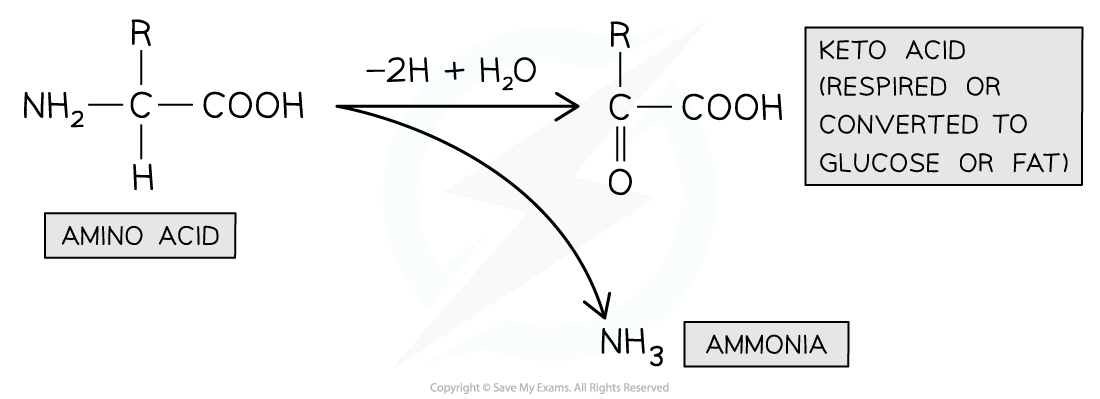Production of Urea (Cambridge (CIE) A Level Biology): Revision Note
Exam code: 9700
Production of urea
Many metabolic reactions within the body produce waste products
The removal of these waste products is known as excretion
Many excretory products are formed in humans, with two in particular (carbon dioxide and urea) being formed in much greater quantities than others
Urea
Urea is produced in the liver
It is produced from excess amino acids
If more protein is eaten than is required, the excess cannot be stored in the body
However, the amino acids within the protein can still provide useful energy
To make this energy accessible, the amino group is removed from each amino acid
This process is known as deamination:
The amino group (-NH2) of an amino acid is removed, together with an extra hydrogen atom
These combine to form ammonia (NH3)
The remaining keto acid may enter the Krebs cycle to be respired, be converted to glucose, or converted to glycogen / fat for storage

Ammonia is a very soluble and highly toxic compound that is produced during deamination; it can be very damaging if allowed to build up in the blood
It dissolves in the blood to form alkaline ammonium hydroxide, disrupting blood pH
It can impact the reactions of cell metabolism such as respiration
It interferes with cell signalling processes
This is avoided by converting ammonia to urea
Urea is less soluble and less toxic than ammonia
Ammonia is combined with carbon dioxide to form urea


Unlock more, it's free!
Did this page help you?